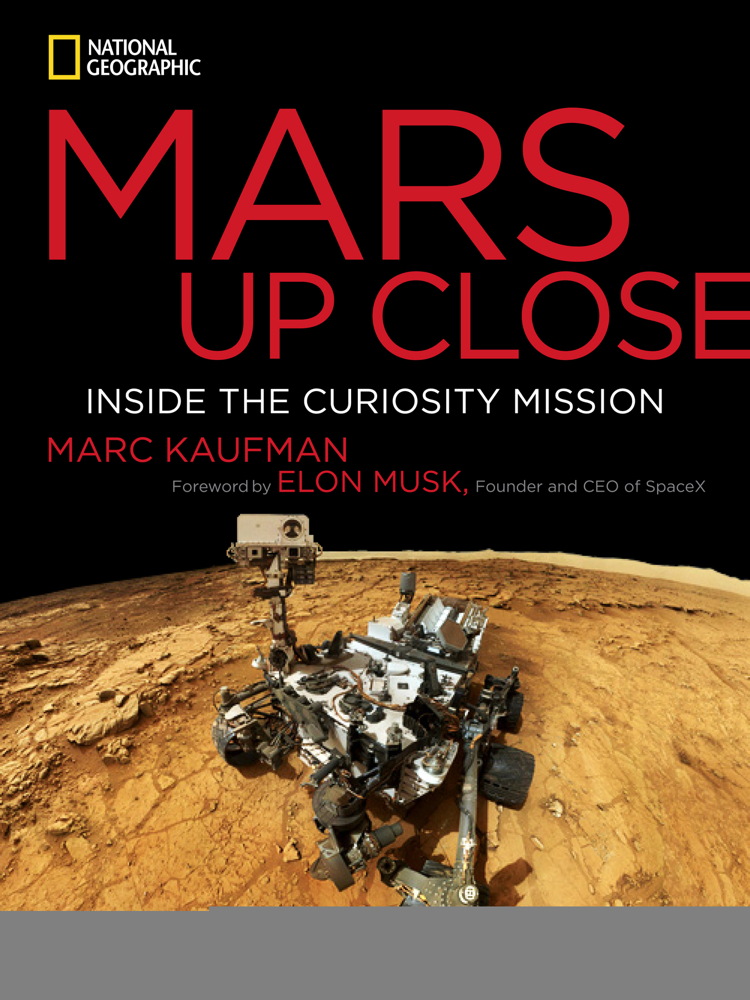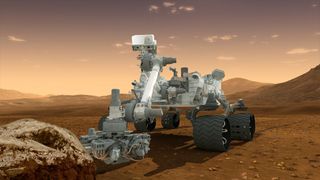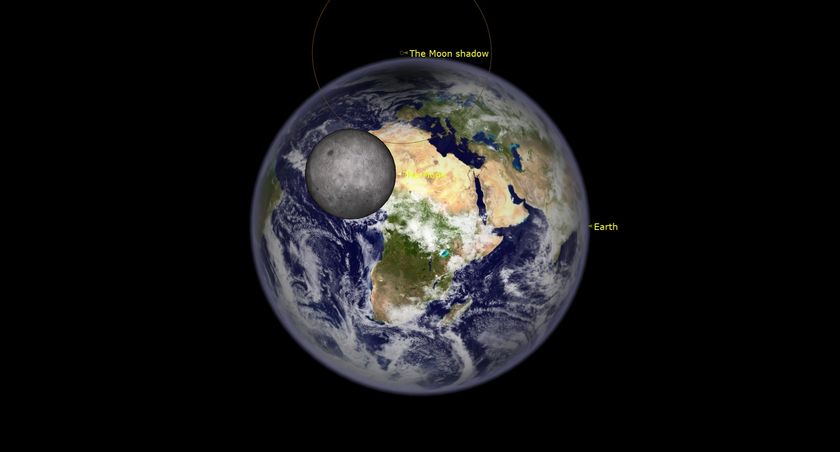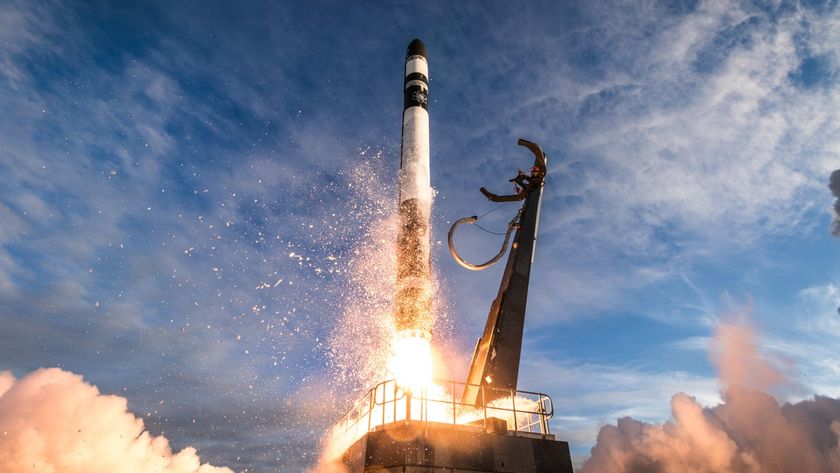
NASA's Curiosity rover landed on Mars in August 2012, pulling off a bold and unprecedented maneuver that saw the robot lowered to the Red Planet's surface on cables by a rocket-powered sky crane.
Curiosity made quick work of its main mission goal, determining just seven months after touching down that an area near its landing site called Yellowknife Bay could have supported microbial life in the ancient past. The 1-ton robot left Yellowknife Bay in July 2013 and last month arrived at the base of the 3.4-mile-high (5.5 kilometers) Mount Sharp, which has long been the mission's chief science destination.
Veteran science journalist Marc Kaufman has written a new book that takes readers far beyond this basic mission outline. "Mars Up Close: Inside the Curiosity Mission" (National Geographic, 2014) features in-depth insights from many of the $2.5 billion mission's key players. And as expected with a National Geographic book, there are lots of amazing photos. [Latest Photos by the Curiosity Rover]
Space.com caught up with Kaufman recently to talk about the book, Curiosity's work on Marsand Red Planet exploration in general.
Space.com: What motivated you to write this book?
Marc Kaufman: I wrote a book a couple of years ago on astrobiology called "First Contact." In that, I went pretty deeply into the search for life beyond Earth. It seemed clear that, in the near term in any case, our best chance of coming up with any kind of clues in that regard was probably on Mars. As I spoke to people for that book, I learned more and more about Curiosity, and I thought, This would be a wonderful adventure trek to follow. So that was the origin — the interest in astrobiology, and then the interest in telling a story.
I had thought there was going to be a beginning, middle and end, the beginning being when they landed, the middle when they took the trip to Mount Sharp and the end when they arrived. But it didn't quite work out like that.
Get the Space.com Newsletter
Breaking space news, the latest updates on rocket launches, skywatching events and more!
Space.com: What do you hope readers take away from 'Mars Up Close?'

Kaufman: There are a few things. First, the images of Mars show a place that is entirely different than what 99.9 percent of people imagine. With the kind of cameras that they're using and with the enhanced color and so on, you can see features there that are very striking, very Earthlike. It's a place that you now can see more as a cousin of Earth than you could before, when the Viking pictures or even the MER [Mars Exploration Rovers, Spirit and Opportunity] pictures showed a pretty bleak place.
But here you see the big mountain, you see the cracked mudstone bed of Yellowknife Bay, and it's not very hard to imagine that there was a lake there. And once you imagine a lake, then you imagine rain or snow, and then — who knows? — you start imagining some sort of life. So I think the images bring Mars into a different kind of focus.
And spending a lot of time with people who are way into Mars, you can't help but also capture some of their enthusiasm for not only further robotic exploration, but also someday getting humans there. And I think that is in a sense part of what I'm writing about here: This is a place that is deeply, deeply fascinating, a glorious place, and maybe it's worth people thinking more in terms of supporting efforts to get humans out there. [Red Planet or Bust: 5 Manned Mars Mission Ideas]
But the other thing that I find deeply fascinating is that Mars, and what they're finding, makes you think in astronomical time. We think of something old as being last week, or 100 years ago, or 1,000 years ago, or a million years ago. But here what they're finding are important clues about things that occurred 3.5 or 4 billion years ago. In terms of astronomical time, that's not a big deal. That's what they're reaching back for, and they're finding stuff that then connects old Mars to current Earth.
Space.com: Did anything about Mars or the Curiosity mission particularly surprise you while you were researching and writing this book?
Kaufman: One of the things that is most perplexing about how they come to these decisions is, because of planetary protection issues, they can't go to the places where there is most likely to be microbial life, or remains of microbial life, if any ever existed. I understand the reason why — you don't want to contaminate before you understand — but that was one of the things.
The complexity of the landing, until I got deeply into it, was not something that I understood. But more than anything else, it's the amount of teamwork, connection, that was required to make this thing happen. And the way in which people buy into it, both the scientists and the engineers, was really kind of wonderful to learn about. I'm sure that there were disputes and personality issues and whatever, but for the most part what I saw was just people working incredibly hard. That was really eye-opening — how much these folks had to work together, and how well they did it.
Space.com: Yes, most people don't realize just what goes into a big, complex mission like this —how many people had to come together to make it happen.
Kaufman: And I don't mean to be jingoistic about this, but this is something that the United States does so much better than anyone else; it's not even in the same ballpark. There are seven successful landings on Mars, and they're all NASA. This is one of the things the country's exceptional at; it's a remarkable thing, and it's kind of where the future is.

Space.com: Did your views of Mars exploration change as you got deeply into this project? If so, how?
Kaufman: In terms of Mars, I just found it increasingly and stunningly absorbing. Some of that is the nature of what we do — you get deeper and deeper into stuff, and you're discovering things you didn't know before. But what they were finding was also kind of drop-dead wonderful. And suddenly the possibility — the plausibility, actually — of Mars being not only habitable but broadly habitable, and as a result of that, quite possibly inhabited by microbial life way back in the day — it kind of takes your breath away.
And we know there are so many exoplanets now — billions and billions — in habitable zones. If they do find remnants of microbial life, or signs that there was once life on Mars, then suddenly the likelihood that there's life on millions of other planets goes way, way up, because now we have two samples.
Follow Mike Wall on Twitter @michaeldwall and Google+. Follow us @Spacedotcom, Facebook or Google+. Originally published on Space.com.
Join our Space Forums to keep talking space on the latest missions, night sky and more! And if you have a news tip, correction or comment, let us know at: community@space.com.

Michael Wall is a Senior Space Writer with Space.com and joined the team in 2010. He primarily covers exoplanets, spaceflight and military space, but has been known to dabble in the space art beat. His book about the search for alien life, "Out There," was published on Nov. 13, 2018. Before becoming a science writer, Michael worked as a herpetologist and wildlife biologist. He has a Ph.D. in evolutionary biology from the University of Sydney, Australia, a bachelor's degree from the University of Arizona, and a graduate certificate in science writing from the University of California, Santa Cruz. To find out what his latest project is, you can follow Michael on Twitter.











